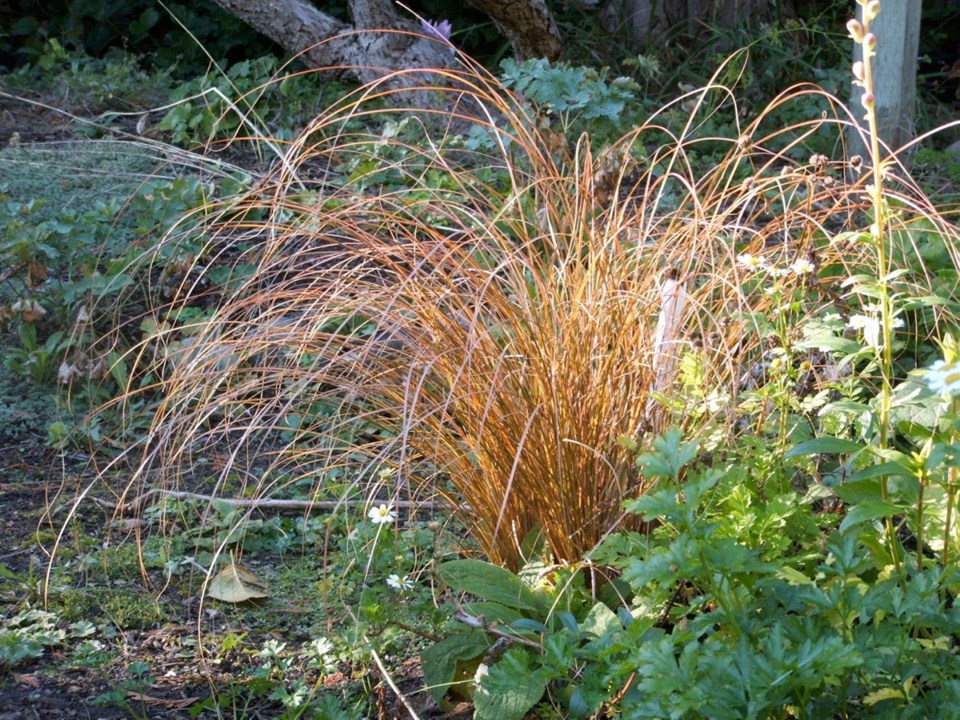Dear Helen: Tuberous begonias that I have over-wintered and saved for a decade have been infested with mildew. What should I do? Will the tubers be all right?
J.A.
Powdery mildew is common on tuberous begonias, and this summer’s unusually humid conditions have not helped. Another difference between this summer and those of most previous years has been more cool nights.
Warm days, cool nights, and humidity foster powdery mildew. Drought-stressed plants become very susceptible to infections. Over my years of growing tuberous begonias in hanging baskets, I’ve noticed a bit of powdery mildew on some of the leaves after I’ve not been watering as carefully as usual.
Remove some of the most severely affected leaves. Rinsing the leaves off several times a week, at mid-day, will help to wash off spores and minimize infections. Don’t do this later in the day. The leaves need to go dry into the night.
In the fall, carefully clean away all top growth once it has died back and the stems fall away at a light touch. Brush excess soil from the tubers, dust them lightly with sulphur powder, and store in a cool but frost-free location. I cover mine with vermiculite. They should be fine.
Dear Helen: I’ve just pulled out all the spent bush beans plants. What would be best to plant in their place to improve the soil?
D.S.
For a fast-growing soil-replenishing planting at this time in the year your best choice is probably buckwheat. Seed should be available at some garden centres and farm supply stores.
Buckwheat should be seeded now. It is a summer soil-building cover crop that grows very fast and densely, smothering weeds. Chop it down and dig it under as it begins blooming or when the weather begins turning cold, whichever happens first. Depending on the weather, the plants may bloom around six weeks after seeding.
The succulent growth breaks down quickly when turned under. As it decomposes, buckwheat adds organic matter to the soil and improves its texture.
Dear Helen: We have a pear tree in the middle of a large garden bed. Snowdrops and camas lilies grow underneath the tree, but the area is bare after the camas lilies die down. What can I plant there to fill the summer gap? The space is a challenge because it is shady and I don’t want to disturb the tree roots or the camas bulbs. This year I put a few plantings in pots there.
S.F.
Potted displays are an excellent choice for placing in difficult to impossible areas for in-ground plantings.
A prime issue for places under and around fruit trees is the need for easy access to the tree for pruning, harvesting, and general cleanup. It’s not practical to fill the area with ornamental specimens that must not be stepped on.
Still, you might consider a few small, carefully placed plants that would be easy to work around. I like small heathers (not the tall ones) under fruit trees. Spring-flowering varieties attract bees to pollinate the fruit tree blossoms. Low-growing, fountain-shaped sedges (Carex) would be suitable as well. These small, attractive grasses come in some lovely shades of copper and bronze.
Another option would be to use some sort of ground cover that would be ecologically useful as well as nice looking. In a recent column I mentioned a blend of mixed clovers and low-growing wildflowers that is used as a lawn replacement. Called Bee Turf, it is available from West Coast Seeds. It could form a carpet under the tree, perhaps dotted with a few container displays.
Two weeks ago, when my first mention of Bee Turf appeared in a column, I had an email from Jon in Campbell River saying, “We just seeded over 2000 square feet with this nifty stuff. It’s still growing like crazy after three weeks from seeding.” West Coast Seeds advises a monthly mowing to keep Bee Turf “trim and tidy.”
GARDEN EVENTS
Food action for resilient communities. An event titled Cultivating Resilient Communities through Food Action: A Transnational Conversation will take place on Thursday at 5 p.m. in room A110 of UVic’s Turpin Building. Food producers and sustainable food system advocates from four continents will talk about their challenges and successes, and converse with the audience about building community resilience through local food action.
Rhododendron conference. This year’s American Rhododendron Society Fall Conference will be in Parksville, on Sept. 27 to 29. For details and registration information visit marsrhodos.ca/ars2019/registration.



